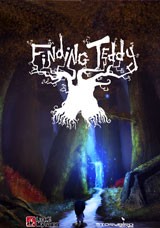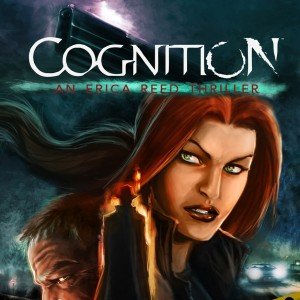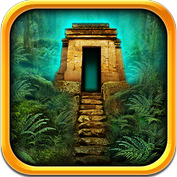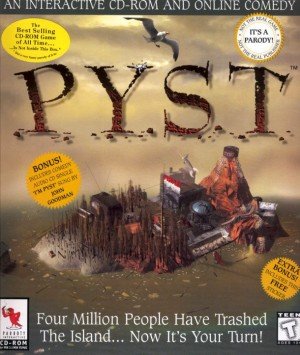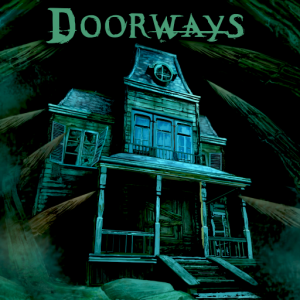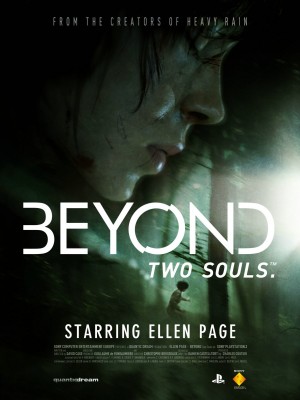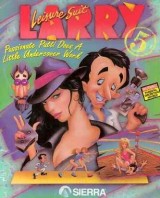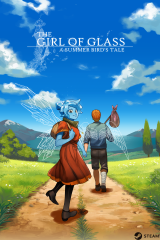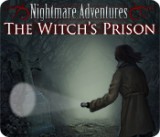Review for Finding Teddy
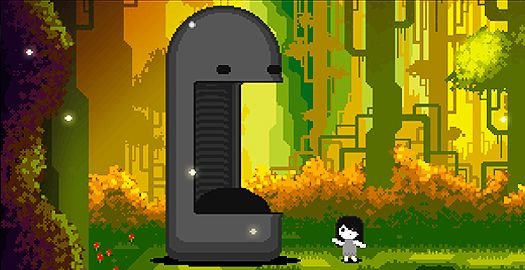
Picture the scene: it’s the middle of the night, and you’ve just woken up to discover that your favourite teddy bear has been stolen by an unfeasibly large, scary spider hiding in your wardrobe. You’re four and you’re scared, but you’re trying to be brave. In Finding Teddy, the search for the missing plush companion leads you into a dreamlike, magical world, populated by the hopes and fears of a small child learning to deal with the world around her. It's never quite clear whether it is all a dream, or some kind of Narnia-like magic, but there's a wardrobe involved, not to mention talking animals. And like Narnia, there are serious lessons to be learned. Despite an abundance of charm and a tiny protagonist, though, this isn’t really a game for children, unless they’re very patient children who don’t mind dying a lot. And love sound puzzles. In fact, it’s simple: if you love sound puzzles, you’ll probably be beguiled by this game. If not, you’re in for a frustrating time.
As far as actual plot goes, that's pretty much it. Your teddy's been stolen, and you have to keep exploring until you find the arachnid that took it. That's not to say you don't learn anything as you go, however: the lands you travel through and the creatures you meet offer quite a poignant insight into the mind of a small girl. There are singing frogs and alligators, moles and snakes, and at one point you'll find yourself singing sadly by a graveside. To start with everything's pleasant, even idyllic, but the journey gets ever darker until you reach the spider's lair. You'll also die. Frequently, suddenly and violently, but don't worry: you'll spring back to life just as quickly.
Have you ever noticed how few of the people you meet in adventure games are happy? They all seem to have just the sorts of problems that take a passing adventurer to solve. Well, the same is true here, but it feels more meaningful than usual. You meet all manner of unhappy creatures and (like the well-brought-up girl you are) you make it your mission to cheer them up. But this isn't one of those fairy tales where they all live happily ever after; it feels more like a metaphor for working through your own issues and slaying your own demons. Or maybe I'm just overthinking things again. In any case, you won't be lonely: along the way you'll run across a cat and a bug in a top hat to keep you company in your quest, not to mention helping out from time to time.
The key word that kept coming up when I thought about how to describe this game is 'minimalist'; everything about it is pared back and simple. In less adept hands, this could have made it seem dull or simplistic, but here it brings a feeling of Zen-like peace and calm that allows the atmosphere to shine through. Some of the sound puzzles threaten to undo all this good work, but we'll get to that later.
The graphics are charming, in a very stylised, retro kind of way. They’re deliberately low-res, and much of it is very angular and mechanical-looking despite the fact that there’s no technology more advanced than a gate or a postbox in sight. Vines look more like pipework, rocks like rectangular slabs and even the animals look more like robots. There’s also a surreal disparity in scale at times: early on you meet a bee the size of a small building and a worm-like creature that’s even bigger. You start out in a sunlit forest, but it’s not long before you’re tramping through a swamp and on to the dark recesses of the giant spider’s lair. A neat touch is that you (and your companions) are shown in greyscale against these colourful backdrops, helping to highlight just how sad you’re feeling. The scenes are very static, as aside from the creatures you meet and a few dancing dust motes, there's very little to bring them to life. Here, though, less feels like more and I didn't really miss the scudding clouds and tinkling waterfalls of other games; instead, the simplicity helps make the creatures' actions and emotions stand out.
There's a similarly minimalist approach to hotspots: aside from exits, there's rarely more than one and in many cases none at all, with much of the environment seemingly there to provide atmosphere and a sense of scale. Unfortunately, that means you'll spend much of your time wandering back and forth through it all, trying to remember where you saw a particular creature or object. You can run by clicking twice on an exit, but I'd have preferred a less spread-out design, or some kind of quick travel map.
The music and effects are also simple but effective. There's the whistle of wind, the pattering of raindrops and a gentle ambient background score that barely qualifies as music but helps to unobtrusively set the mood. With so much of the game focused on sound puzzles, though, more would definitely have been distracting. There is, at least on the surface, no dialogue or written messages of any kind, though depending on your point of view the game could be considered fully voiced, just in an entirely unconventional way.
Your interactions with the world are predictably straightforward: you can pick up objects and use them with the environment, ask your companions to do things for you and... that's about it. Apart from singing, but we’re not there yet. This is all elegantly introduced by arrows that pop up the first time you need a particular function. Clicking on yourself brings up a halo of bubbles, like the petals of a flower, holding your inventory. Taking objects and using them is just a matter of left-clicking, and to instruct your companions you first click on them and then on the object you want them to interact with. One thing worth bearing in mind, which wasn't immediately obvious to me, is that you can ask both companions to co-operate on a task by clicking on both of them. You'll need to do this at one point, and I was quite stumped for a while until I stumbled across this ability.
So far so good, but now we come to the elephant in the room, the one thing that threatened to derail an otherwise lovely experience for me: the sound puzzles. Oh, the sound puzzles! They take up the majority of your time, so if they're not your thing this is definitely not the game for you. Even if they are your thing, there's an underlying metalogic to them that you'll need to grasp in order to finish the game. Until you do, they can seem arbitrary and frustrating, so your experience is likely to depend heavily on how quickly the penny drops. That's what happened to me on my first playthrough: I was about three-quarters of the way through the game before I fully understood and by then I'd built up a good head of irritation that never quite dissipated. Playing through a second time with the benefit of this understanding I had a much better time, though even then I felt the experience wasn't as good as it could have been.
You can get quite far with only a superficial idea of what's going on, so it took a while for me to realise that the game wasn't just being weirdly arbitrary and actually wanted me to think harder about what I was doing. Without giving too much of the game away, these puzzles typically involve taking a sound pattern heard in one location (I'd hesitate to call it a musical phrase) and repeating it in another by selecting notes from an onscreen keyboard. Only a few notes are filled in with symbols to begin with (the rest just being dots) but, confusingly, that doesn’t mean that you only need the notes with symbols. You’ll frequently have to use the others as well; they’re given their own symbols when you use them correctly to complete a puzzle.
At the time, I thought all this was like repeating the calls of a bird or the barks of a dog, that it was a language the recipients understood but I didn't have to. Wrong! There was more to it, and yes, I did feel a bit silly when I finally realised what was going on. Looking back with the benefit of hindsight, I can even see that there's quite a neat idea underneath it all. The satisfaction I felt when the insight came, though, couldn't entirely wipe away the frustration of getting there.
The other problem is that the patterns keep repeating endlessly, so trying out notes until you find the right ones is a slow and annoying process unless you've been blessed with perfect pitch. With the benefit of grokking the metalogic, this becomes significantly simpler, but I still found it more frustrating than fun. It also doesn't help that the tones that play are more grating and harsh than gentle and musical – or at least they are after you've spent the last few minutes with them playing in an endless loop, trying to work out what they are. Your mileage may vary, of course. Since each note has an associated symbol, much of this trouble could have been avoided simply by displaying these symbols as the pattern plays. (In some cases, the game does this but in others it doesn't.) That way, players could choose to engage with the puzzles on the level of either sounds or symbols and I, for one, would have been much happier.
Even with all the backtracking and stopping to figure out sound patterns, the game is short. Very short. My first playthrough only took about three hours. Given the slightness of its main conceit, however, the length is about right and ensures that the game doesn't overstay its welcome. This is an experience that's best described as short and sweet. It's also worth noting that the ending possibly sets the stage for a sequel.
At its best, Finding Teddy is simple, charming and gives off a dreamy, Zen-like vibe with a dark undercurrent. The one fly in the ointment (which may or may not be wearing a top hat) is the reliance on sound puzzles. They're an interesting idea, and you may well find that the joy of solving them trumps the pain. If, like me, you don't have a great ear for sound puzzles, you'll find yourself wanting to like this game more than you do. If you’re naturally attuned to such puzzles, however, you'll find a game that's short, sweet and engaging, if a little bit too repetitive.


